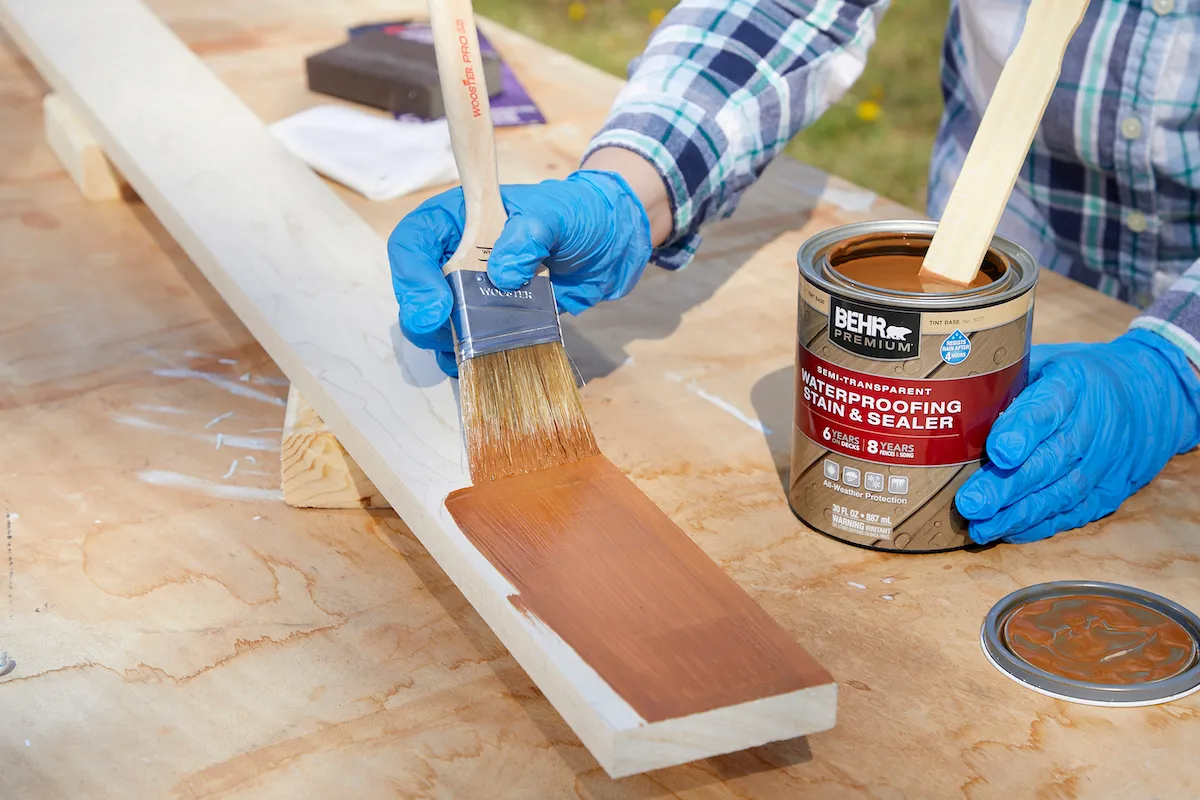Wooden structures, whether they are decks, porches, docks, fences, log cabins, or wood siding, require proper care to maintain their beauty and durability. One of the most effective ways to protect and prolong the life of wood is through sealing. Wood sealing techniques range from basic surface sealing to more advanced methods like deep sealing. This article explores various wood sealing techniques, their benefits, and the importance of choosing the right method for different types of wooden structures.
Introduction to Wood Sealing
Wood sealing is the process of applying a protective coating to wood surfaces to shield them from environmental damage such as moisture, UV radiation, and biological threats like mold and insects. Proper sealing helps maintain the wood’s appearance, enhances its durability, and reduces the need for frequent maintenance. Understanding the different wood sealing techniques can help homeowners and property managers choose the best method for their specific needs.
Basic Sealing Techniques
Basic sealing techniques involve applying a surface sealant to the wood. This method is relatively simple and provides a protective layer on the wood’s exterior. Basic sealing is suitable for many common wooden structures and can be an effective way to enhance their longevity.
Surface Sealing
Surface sealing is the most common and straightforward wood sealing technique. It involves applying a clear or tinted sealant directly to the surface of the wood. The sealant forms a protective barrier that prevents moisture from penetrating the wood and blocks harmful UV rays. This technique is effective for decks, porches, and fences.
To apply a surface sealant, the wood must be clean and dry. The sealant is typically applied using a brush, roller, or sprayer. It is important to follow the manufacturer’s instructions regarding the number of coats and drying times. Regular reapplication is necessary to maintain the protective barrier.
Staining
Staining is a technique that combines sealing with adding color to the wood. Stains penetrate the wood fibers and provide protection from within, while also enhancing the wood’s natural grain and color. There are various types of stains, including oil-based, water-based, and gel stains, each with its own advantages.
Staining is ideal for structures like decks, porches, and fences where aesthetics are important. The process involves cleaning the wood, applying the stain evenly, and allowing it to dry thoroughly. Stains offer moderate protection against moisture and UV rays but may require more frequent reapplication compared to other sealing methods.
Advanced Sealing Techniques
Advanced sealing techniques offer superior protection by penetrating deeper into the wood and providing long-lasting benefits. These methods are especially useful for structures exposed to harsh environmental conditions, such as docks, log cabins, and wood siding.
Deep Sealing
Deep sealing involves using a specialized sealant that penetrates deep into the wood fibers, providing comprehensive protection from within. This technique is highly effective for preventing moisture damage, wood rot, and insect infestations. Deep sealing also offers enhanced UV protection, helping to preserve the wood’s natural color and strength.
To achieve deep sealing, the wood is thoroughly cleaned and dried before the sealant is applied. The sealant is often applied in multiple coats, allowing each layer to penetrate deeply into the wood. Deep sealing can significantly extend the lifespan of wooden structures and reduce the frequency of maintenance.
Epoxy Sealing
Epoxy sealing is an advanced technique that involves applying an epoxy resin to the wood surface. Epoxy forms a hard, durable coating that provides excellent protection against moisture, UV rays, and physical damage. This method is ideal for structures like docks and marine applications where the wood is constantly exposed to water.
The epoxy sealing process requires careful preparation, including sanding the wood to create a smooth surface. The epoxy resin is then mixed and applied evenly to the wood. Once cured, the epoxy forms a tough, waterproof barrier that can withstand extreme conditions. Epoxy sealing can be more labor-intensive and expensive than other methods but offers unparalleled protection.
Polyurethane Sealing
Polyurethane sealing is another advanced technique that provides a durable and flexible protective layer on the wood. Polyurethane sealants are available in oil-based and water-based formulas, each offering different levels of durability and ease of application. This method is suitable for a wide range of wooden structures, including decks, porches, and wood siding.
Applying a polyurethane sealant involves cleaning the wood, applying the sealant with a brush or sprayer, and allowing it to dry completely. Multiple coats are often required to achieve optimal protection. Polyurethane sealants offer excellent resistance to moisture, UV rays, and abrasion, making them a popular choice for high-traffic areas.
Importance of Choosing the Right Sealing Technique
Choosing the right wood sealing technique is crucial for ensuring the longevity and appearance of wooden structures. The appropriate method depends on several factors, including the type of wood, the structure’s exposure to environmental elements, and the desired level of maintenance.
For example, surface sealing and staining are suitable for decks, porches, and fences where aesthetics and moderate protection are important. Deep sealing and epoxy sealing are ideal for docks and marine applications where the wood needs robust protection against moisture and UV rays. Polyurethane sealing is a versatile option that provides durable protection for various wooden structures.
Maintenance Tips for Sealed Wood
To maximize the benefits of wood sealing, regular maintenance is essential. Here are some tips to keep sealed wooden structures in optimal condition:
- Regular Cleaning: Keep the surface clean by removing dirt, leaves, and other debris that can trap moisture and cause damage. Use a mild detergent and water to clean the wood, and avoid harsh chemicals that can strip the sealant.
- Inspect for Damage: Periodically inspect the wood for any signs of damage, such as cracks, chips, or peeling sealant. Address any issues promptly to prevent further deterioration.
- Reapply Sealant: Depending on the type of sealant used and the level of exposure to the elements, reapply the sealant every few years to maintain its protective properties. Consult with a professional to determine the appropriate reapplication schedule.
- Avoid Heavy Objects: Avoid placing heavy objects on sealed wood surfaces, as they can cause dents and scratches that compromise the sealant’s effectiveness.
- Use Protective Covers: For outdoor furniture and other items placed on sealed wood, use protective covers to minimize direct contact and reduce the risk of damage.
By following these maintenance tips, you can ensure that your sealed wooden structures remain protected and visually appealing for years to come.
The Benefits of Professional Wood Sealing Services
While DIY sealing projects can be effective, professional wood sealing services offer several advantages that can enhance the protection and longevity of wooden structures. Professional services use high-quality materials and advanced techniques to ensure optimal results. Additionally, experienced professionals can assess the specific needs of each structure and recommend the best sealing method.
- Expertise and Experience: Professional sealers have the knowledge and experience to apply sealants correctly, ensuring even coverage and thorough protection. They are also equipped to handle complex sealing projects that may be challenging for DIY enthusiasts.
- High-Quality Materials: Professional services use top-of-the-line sealants that provide superior protection against moisture, UV rays, and other environmental factors. These materials are often more durable and effective than products available to consumers.
- Time and Convenience: Hiring professionals saves time and effort, allowing homeowners and property managers to focus on other tasks. Professional sealers can complete the project efficiently and with minimal disruption.
- Long-Lasting Results: Professional sealing services provide long-lasting protection, reducing the frequency of maintenance and reapplication. This can result in significant cost savings over time.
Investing in professional wood sealing services is a smart choice for homeowners and property managers who want to ensure the best possible care for their wooden structures. By leveraging the expertise and resources of professionals, you can enjoy the benefits of durable, beautiful, and well-maintained wood for years to come.
Environmental Considerations in Wood Sealing
In recent years, there has been a growing emphasis on environmentally friendly wood sealing methods. Many homeowners and property managers are seeking products and techniques that minimize environmental impact while still providing effective protection for wooden structures.
- Water-Based Sealants: Water-based sealants are an eco-friendly alternative to traditional oil-based products. They emit fewer volatile organic compounds (VOCs) and are less harmful to the environment. Water-based sealants are also easier to clean up and can provide excellent protection against moisture and UV rays.
- Natural Oils and Waxes: Natural oils and waxes, such as linseed oil and beeswax, are sustainable options for wood sealing. These products penetrate the wood fibers and provide a protective barrier without the use of synthetic chemicals. While they may require more frequent reapplication, natural oils and waxes offer a safe and eco-friendly solution.
- Recycled Materials: Some advanced sealants incorporate recycled materials, reducing waste and promoting sustainability. These products can provide effective protection while contributing to environmental conservation efforts.
Choosing environmentally friendly wood sealing products and techniques is a responsible way to protect wooden structures while minimizing ecological impact. By opting for sustainable solutions, homeowners and property managers can enjoy the benefits of well-maintained wood without compromising the health of the planet.
Conclusion
Wood sealing techniques range from basic surface sealing to advanced methods like deep sealing and epoxy sealing. Each technique offers unique benefits and is suited to different types of wooden structures. Understanding the various sealing methods and choosing the right one for your needs is crucial for ensuring the longevity and appearance of your wood.
Regular maintenance, including cleaning and reapplying sealant, is essential to keep sealed wood in optimal condition. Professional wood sealing services provide expertise, high-quality materials, and long-lasting results that can enhance the protection and durability of wooden structures.
By investing in proper wood sealing and maintenance, homeowners and property managers can enjoy the beauty and functionality of their wooden surfaces for years to come. Additionally, considering environmentally friendly sealing products and techniques can help protect the environment while preserving the natural charm of wood.




